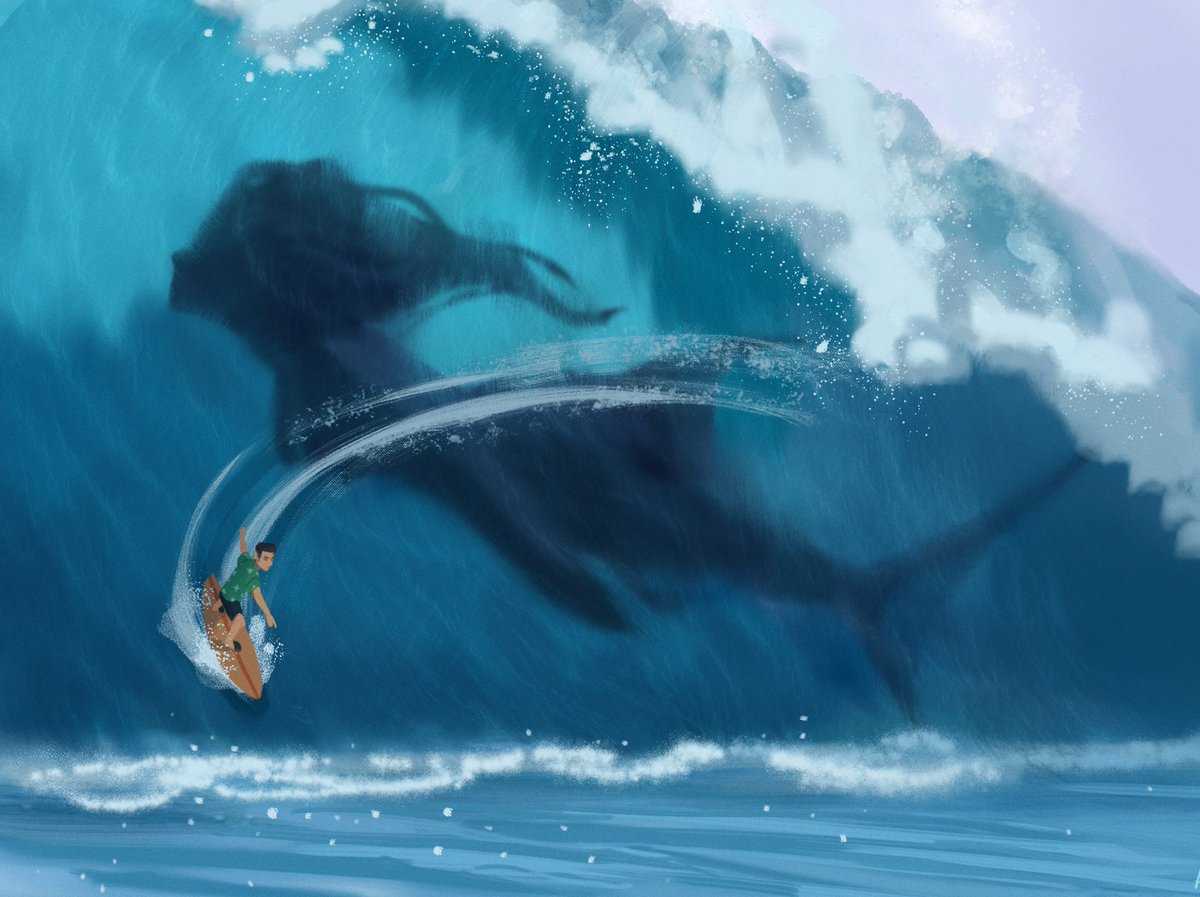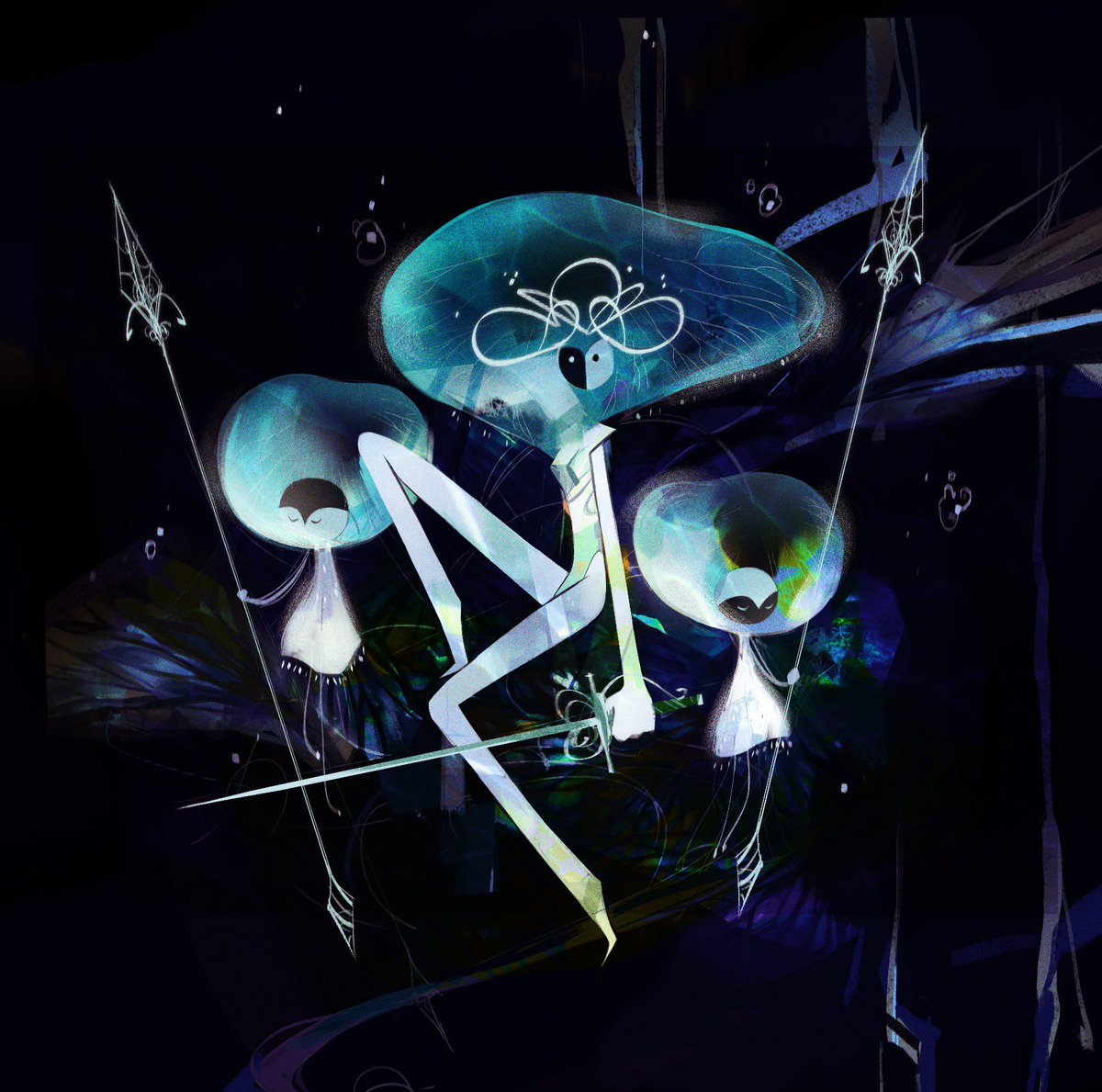I found all the art in this post from artists I follow and by searching the hashtag. Check em out and hire em for stuff.
Mermaids are also great for fantasy games. Here's the how and why.
Soundtrack for this post.
 |
| art by @pkyrachu |
The first type is the classic, storybook - even, Disney - mermaid. Top half pretty naked lady or, less commonly, man, and bottom half big ol' fish. (Side note: as far as we can tell, mermen predate mermaids. Huh.)
The second type incorporates the fishiness throughout. Blue scale-like skin, fin-ears, kelp hair, even barracuda teeth or, god forbid, gills.
Before we get into things, it would be remiss of me to not mention the fantastic Kiel Chenier's upcoming Weird on the Waves pirate setting kit, in which mermaids are a playable race. He's teased the variants: top half fish, or left half fish, or one where the fish bits are all inside. Can't wait for that.
(I guess I'll tag him here so people can find his stuff? I still have zero idea how or why Google Plus is a thing, but I think this'll do it? +KielChenier )
Let's talk about the first one first.
 |
| art by @anamericanghost |
These mermaids are perfect for your fantasy game. If you describe a skeleton floating blobbily in a square mass, that one player who's read the monster manual or been playing for 30 years is gonna go "Oh! It's a gelatinous cube!", to dumbfounded expressions from the rest of your group.
If you describe a naked woman coming out of the water, her lower half hidden beneath the waves, everyone's gonna be thinking the same thing. And when you describe her long, elegant tail flipping lazily in and out of the water, everyone's gonna be on the same page. Everyone knows what mermaids are. They share a prized place with dragons and unicorns as being seeped into the cultural consciousness of not just modern western civilisation, but pretty much the whole dang planet.
But while dragons are for killing, or avoiding, or maybe talking to but then at some point killing, and unicorns are for... I dunno, riding? Unicorns are boring. Anyway, these "type one" mermaids send out a pretty clear signal, unlike almost every other fantasy monster, that you can just talk to them. For us running our OSR games, this is a godsend. Yeah, it's a monster on a random encounter, but this monster is... nice. She's smiling, she's happy to help. Anyone's first port of call is going to be at least attempting communication.
And from there, mermaids can open up your world in other ways. Half of her's up here, sure, but half of here is very much from... down there. What you get is instant worldbuilding, the implication that at the very least there's a coral castle or a sunken fortress or a clan of merrily singing fishladies on a rock somewhere nearby.
An interaction with a monster that everyone instantly understands, that encourages communication and that, even in passing, fleshes out your world? As far as OSR play goes, that's a fucking win.
And sure, maybe they drown sailors for fun, that bit's up to you.
 |
| art by @andrewkmar |
Under the sea is weird. We know this. There are things down there that are more otherworldly than any sci fi movie's alien imaginings. These mermaids generally do a crappy-to-passable job of translating that otherness, but there's certainly untapped potential in the depths.
The problem here is, that if you want to go weird, there are better options than mermaids. The recognisable factor that makes the type-ones work so well puts you at a disadvantage here. It's like Cthulu: once a cosmic nightmare, vast and potent beyond our primate understanding, now a plushie you can get on a million Etsy stores, and the mascot for every other nerd-culture card game Kickstarter.
What these mermaids do best is in translating as animals, as beasts. I haven't played The Witcher III, but I've watched my girlfriend play it enough to know it's pretty great, and very Dungeons and Dragons. I once saw her rowing a little boat around the game's Viking-world analogue, when sirens attacked. I think that's what they're called in the game; in any case, sirens and mermaids have been conflated into mostly the same thing since forever.
These were no seashell bra-clad maidens, nor were they deep sea aliens. These were proper monsters. They were big, like sharks, and they tore into the boat as much as they did lovably gruff protagonist Geralt (I call him Jerry). We weren't knights on a quest, hearing the perilous siren's call, and we hadn't stumbled into anyone's non-euclidean eldritch domain. They were predators, and we were in their territory.
They weren't unknowable creatures from depths hitherto untravelled, or beautiful yet deadly temptresses. There are talking monsters in the Witcher, and fairytale stuff, but these just kinda... screamed. It was awesome. Sure they were vaguely human shaped, but the uncanny valley didn't even factor into it.
That's how you make type two mermaids work. Wait until the players are splashing around Amity Beach, and then let em loose. I'm not generally a fan of the whole "this monster is just an animal in its ecosystem, here's how it functions biologically" vibe, but as with my previous foray into trolls, sometimes it just works.
 |
| art by @hairytentacles |
They also feature in the setting of my current home game, and I'm trying to collate my notes into something playable so that I can share it. I'll likely slap on some art and a hexmap and call it a module. Stay tuned for news on when and how you can get it, probably in a couple of months.
There's a whole lot more than mermaids going on in my little setting, and you could certainly run a campaign without bumping into one. All I'll say is that I've managed to work both the "type one" and "type two" mermaids in there, and it's working very nicely.
It's pretty simple actually. Freshwater and saltwater.
Good thoughts.
ReplyDelete